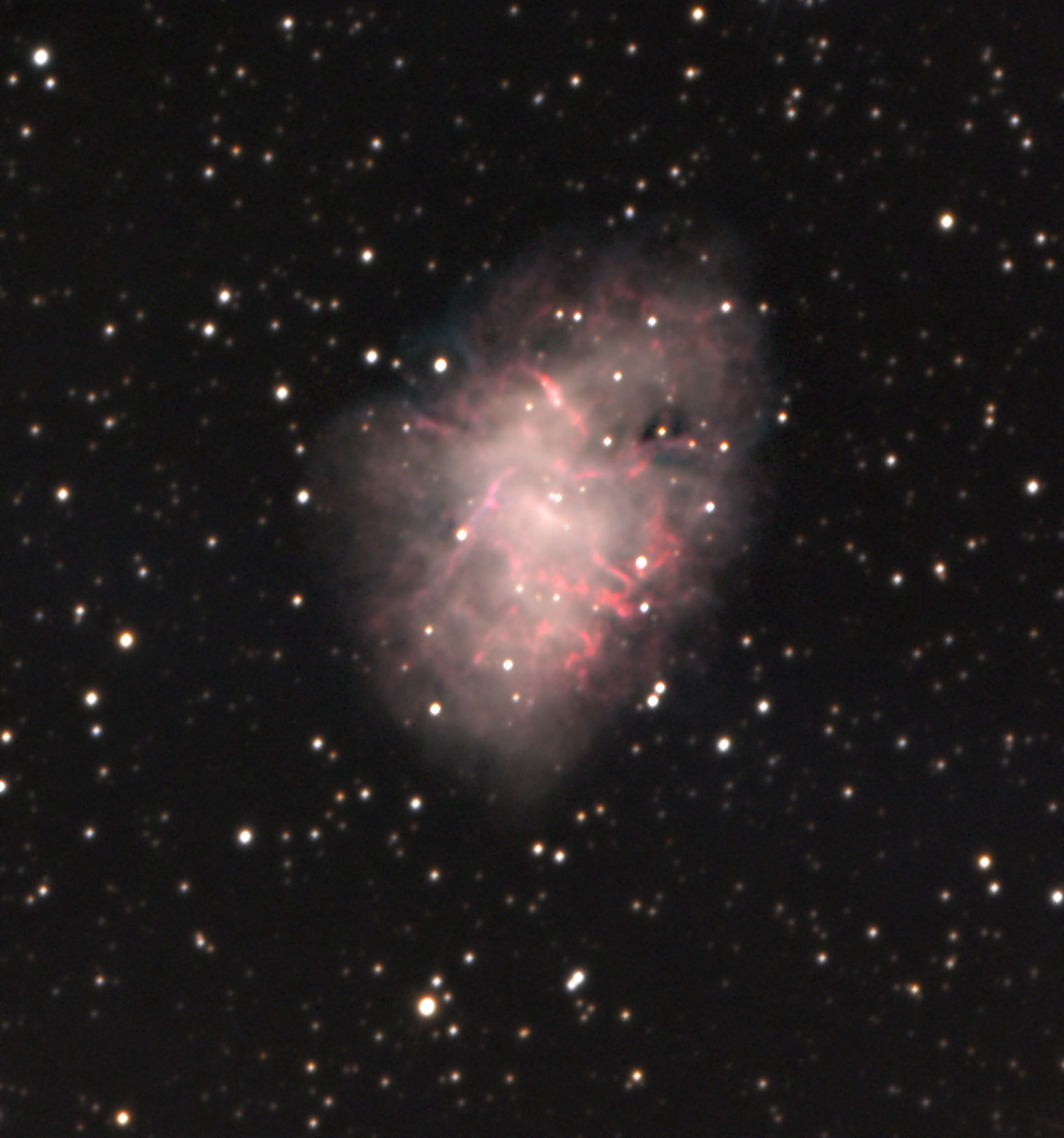M57 the Ring Nebula, taken Sept. 2005, with RC12.5" 10 three minute exposures in LRGB, stacked and process with MaximDL, and Photoshop.
Rosetta Nebula NGC 2244 taken June 1st, 2006 with Eplison 210, ST8E with H@ filter for 1 hr.
The Bubble nebula NGC 7635. Taken with RC12.5, ST8E, AstroDon filters. Eight 3 min. exposers in LRGB.
The Dumbbell nebula, M27, Taken with RC12.5, ST8E, AstroDon filters. Eight 3 min. exposers in LRGB.
M97, the Owl Nebula, taken with the RC12.5", ST8E, CW8 in LRGB, 6 four minute exposures. Processed with MaximDL and Photoshop.
M57 the Ring Nebula, taken Sept. 2005, with RC12.5" 10 three minute exposures in LRGB, stacked and process with MaximDL, and Photoshop.
The Cocoon Nebula, taken Sept. 2005 with RC12.5 @ f5, with ST8E, CW8, 6 two minute exposures in LRGB, process with MaximDL and Photoshop
Pelican Nebula with Eplison 210 and ST8E
The famous ring nebula M57 is often regarded as the prototype of a planetary nebula, and a showpiece in the northern hemisphere summer sky. Recent research has confirmed that it is, most probably, actually a ring (torus) of bright light-emitting material surrounding its central star, and not a spherical (or ellipsoidal) shell.
The Rosetta Nebula is a vast cloud of dust and gas, extending over an area of more than 1 degree across, or about 5 times the area covered by the full moon. Its parts have been assigned different NGC numbers: 2237, 2238, 2239, and 2246. Within the nebula, open star cluster NGC 2244 is situated, consisted of the young stars which recently formed from the nebula's material, and the brightest of which make the nebula shine by exciting its atoms to emit radiation. Star formation is still in progress in this vast cloud of interstellar matter; a recent finding of a very young star with a Herbig-Haro type jet by astronomers at the NOAO has been announced.
It's the bubble versus the cloud. NGC 7635, the Bubble, is being pushed out by the stellar winds of massive central star BD+602522. Next door, though, lives a giant cloud, visible above to the upper left. At this place in space, an irresistable force meets an immovable object in an interesting way. The cloud is able to contain the expansion of the bubble gas, but gets blasted by the hot radiation from the bubble's central star.
This planetary nebula is certainly the most impressive object of its kind in the sky, as the angular diameter of the luminous body is nearly 6 arc minutes, with a faint halo extensing out to over 15', half the apparent diameter of the Moon
M97 is one of the more complex planetary nebulae. Its appearance has been interpreted as that of a cylindrical torus shell (or globe without poles), viewed oblique, so that the projected matter-poor ends of the cylinder correspond to the owl's eyes. This shell is enveloped by a fainter nebula of lower ionization. The mass of the nebula has been estimated to amount 0.15 solar masses, while the 16 mag central star is believed to be of about 0.7 solar masses. Its dynamical age is about 6,000 years. (from Stephen J. Hynes, Planetary Nebulae).
The famous ring nebula M57 is often regarded as the prototype of a planetary nebula, and a showpiece in the northern hemisphere summer sky. Recent research has confirmed that it is, most probably, actually a ring (torus) of bright light-emitting material surrounding its central star, and not a spherical (or ellipsoidal) shell.
The Cocoon Nebula is made up of the open cluster IC5146 and surrounded by nebulosity of mostly Hydrogen gas. The nebula is located at the end of a long dark nebule B168. The cluster is made up of mostly 12th magnitude stars.








 .
.
|
